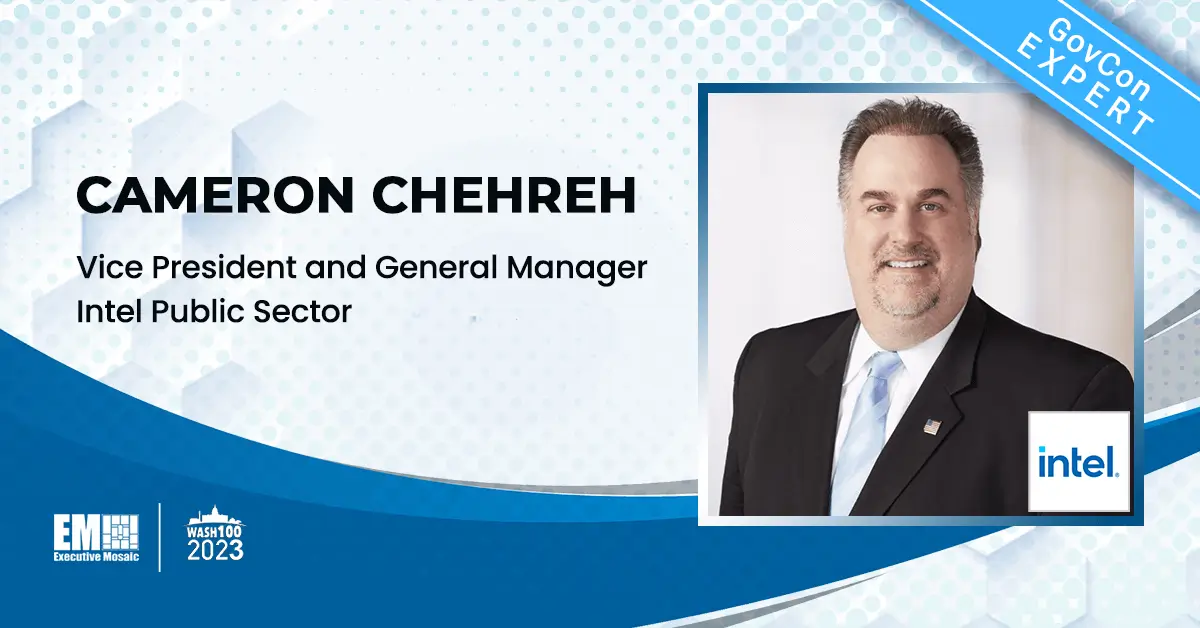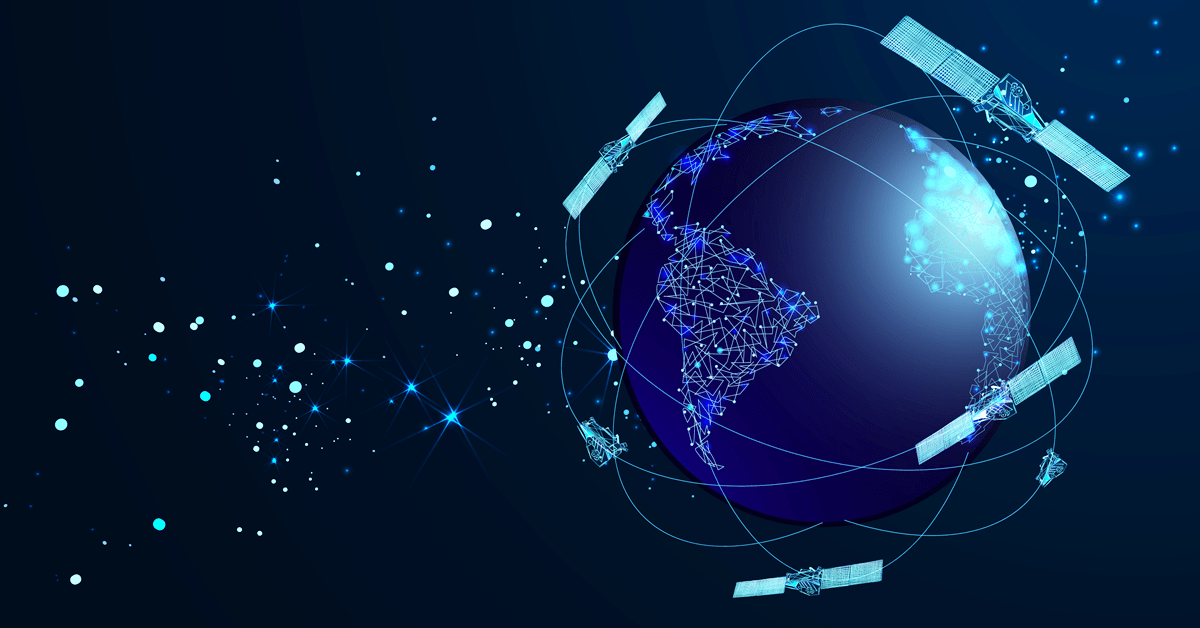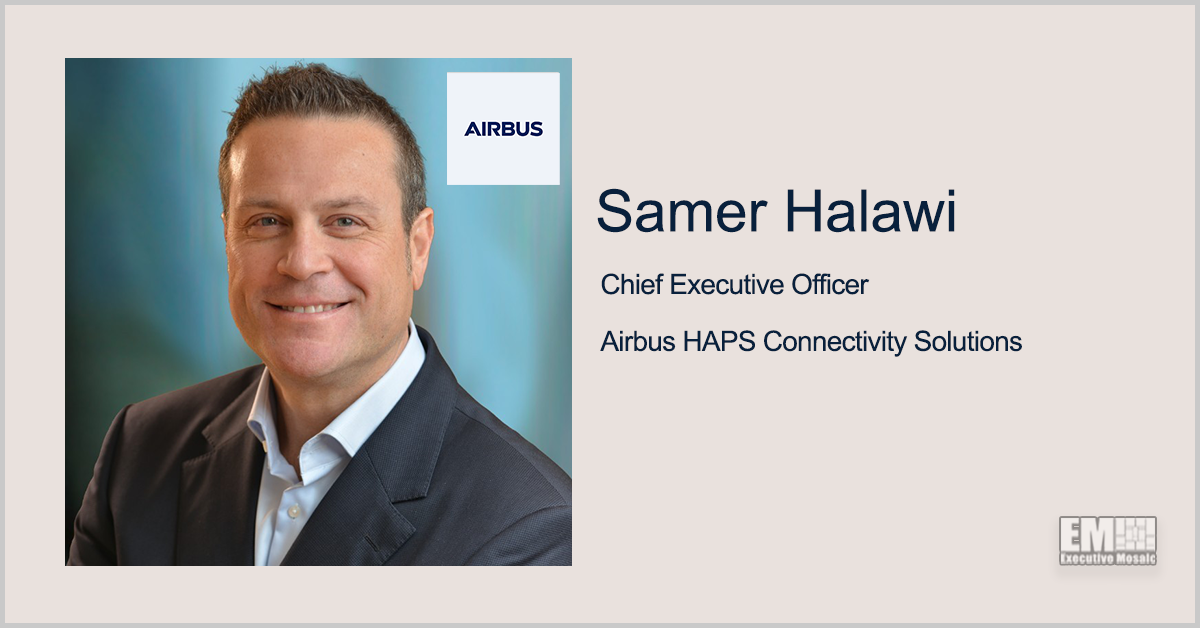By Cameron Chehreh, vice president and general manager of public sector at Intel and 2023 Wash100 Award winner
Sensing is essential to survival. Even the simplest microorganisms can sense stimuli such as light, chemicals and pressure. Humans, of course, can respond to a wide range of senses, including vision, hearing, taste, smell, touch, balance and more. Sensing is how we understand, plan for, adapt to and thrive in a world in constant flux.
So, it makes sense — there’s that word again — that sensing is one of five tech superpowers, along with compute, connectivity, AI and cloud-to-edge. These capacities combine to comprise the digital mission infrastructure that powers today’s organizations.
But what do we mean by sensing in an organizational or mission context? What are the essential use cases for tech-enabled sensing today? And what are some of the emerging capabilities that will power sensing tomorrow?
Making sense of sensing
Sensing involves collecting, assessing and acting on conditions, events and other inputs through devices and other means of data capture. Sensing can happen at any location, but increasingly it takes place at the edge and beyond. In fact, sensing is often where technology and mission intersect.
Many types of sensors are essential to civilian government, critical infrastructure and military missions. Optical, motion, environmental, biometric and other sensors can provide near-real-time information at the point of need. Often these data feeds are combined to enable situational awareness.
Sensing requires more than just sensors. One necessity is power management of devices, in part enabled by microprocessors that meet the size, weight, power, cost and cooling — or SWAPC2 — requirements of the extreme edge. Another is connectivity with the network, enabled by WiFi, 5G and other technologies. A third is data analysis to extract actionable intelligence from ever-growing data streams.
Sensing is being enhanced in innovative ways. Stereo image sensors combine multiple cameras to calculate depth and enable robots to see, understand, interact with and learn from their environment. WiFi sensing bounces signals off objects to measure ambient motion. In a healthcare setting, WiFi sensing could detect falls or even breathing.
Sensing also involves specialized software. SceneScape is a sensing solution that goes beyond vision-based AI to achieve spatial awareness from sensor data. The platform leverages data from multiple sensors to create a 4D digital twin of a physical space, with live updates and predictive capabilities.
Proliferation of sensing use cases
Sensing has become mission-critical in federal civilian, military, municipal and critical infrastructure environments. Government use cases cover:
- Emergency response, in which remote satellites and drones can assess damage caused by disasters, support responders with data and help ensure human safety.
- Public health monitoring, where sensors can detect and follow the spread of diseases, assess intervention outcomes and track patient vitals.
- Public safety and law enforcement, which can use video and other sensors and analytics to achieve situational awareness.
- Transportation, which increasingly relies on sensors to manage traffic, transit and infrastructure such as bridges and ports.
- Critical infrastructure, which depends on sensors to gauge air, water and soil quality as well as equipment condition, with predictive analytics for proactive management.
The DoD is equally reliant on sensing. Military use cases include:
- Warehousing and logistics, with sensors and software providing data and analytics to track provisions and even pre-stage logistics for tactical advantage.
- Cybersecurity, in which sensors can identify, track and predict sophisticated attacks that might otherwise slowly spread throughout networks and wreak havoc.
- Safety and physical security, which can use motion, acoustic, seismic, perimeter and incursion detectors to track environmental conditions, equipment and personnel.
- Body sensors, which are an increasingly essential part of the warfighter’s toolkit. These devices can provide situational awareness as well as early warnings of fatigue and health issues. Algorithms can even measure effort to calculate calorie consumption to support logistics planning.
- Augmented reality, where real-time sensors and heads-up displays can overlay the real world with data inputs for equipment maintenance, navigation, target identification and more.
- Electronic warfare systems, with radio, radar and other sensors detecting, understanding and countering adversarial communications, signals and electronic threats.
Edge foundations for AI-powered sensing
Sensors don’t merely capture data. Today, they must also analyze data at the point of need to deliver insights at the speed of mission relevance. Lightweight AI models that run at the edge make this analysis possible.
One way to extend AI to the edge is through the new AI PC, which I believe represents one of the biggest advances in the compute paradigm in 30 years. The AI PC is the first processor to combine a CPU, GPU and neural processing unit, or NPU, on a single chip. This novel approach enables a dedicated AI engine with power-efficient AI processing, right on the PC.
But AI is beginning to extend throughout edge and across Internet of Things devices. Soon it will power sensing from core to client to the edge’s farthest reaches. Advancements in chip technology will no longer focus on incremental progress in processing speeds and data rates. Rather, we’ll see AI optimizations in microprocessors for every type of device, turbocharging sensing with AI.
Sensing comes full circle
Sensing goes hand in glove with AI, but it’s integral to all the components of digital mission infrastructure. Together these tech superpowers form a matrix of organizational capability.
One way to understand digital mission infrastructure is to view it through the data lifecycle. That lifecycle arguably begins with compute, which provides the foundation for data processing.
Connectivity is then necessary to bring the data into the processing environment. It involves not just connections among network nodes but also connectedness at the chip level, where system-on-a-chip architectures vastly accelerate data access.
Next, AI leverages the data to enable analysis and understanding in as near real time as possible. Cloud-to-edge brings it all together by sharing data not just from cloud to edge and back, but also among clouds, among edges and ultimately with users, providing the right intelligence in the right place at the right time.
But you could argue just as strongly that the data lifecycle begins with sensing, which feeds the other components. And as more organizations are discovering, a robust sensing strategy is crucial to mission success.







